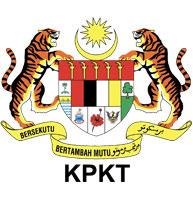History of Establishment
A Brief History
1801
Pre-19th Century Town Planning Services in the Malay States
In 1801, a Committee of Assessors was set up in Penang to provide initial town-planning services. It comprised voluntary members who provided town-planning services in accordance with the requirements of the local community. Their contributions were the earliest recorded town planning activities in this country.
1912 - 1913
The Need for Town Planning in the Early 19th Century
In 1912, a proposal on town planning needs for this country was drawn up by W.F. Nutt. He recommended to the Federal Council of the Federated Malay States that actions should be taken to prevent further unplanned town development and expansion. In 1913, town planning legislation was drafted for Kuala Lumpur so that the town could be divided according to trading zones and other activities (Federal Council 1913). Subsequently, E.L. Brockman, the Chief Secretary announced the establishment of a Town Planning Committee for Kuala Lumpur. It took another eight years, however, for a planning department to be established.
1920 - 1933
The Beginning of Formal Planning Services
3 September 1920: The Southern Australian Government received a cable from the British Government of the Federated Malay States inviting the Government Town Planner, Charles Reade, to the Malay States to advise on town planning in the FMS. 18 January 1921: The first town planning office opened at the Kuala Lumpur Secretariat building. From 1921 to 1927, Reade was assisted by surveyors and engineers from Survey and Public Works Department Administrative officers from the Land Office, who became Town Planning Administrators for the replanning and distribution of lots. 1923: The first Town Planning Enactment, introduced the General Town Plans, replanning and redistributing lots in Kuala Lumpur and other towns in the FMS. The layout of the first new town was prepared for Kuala Kubu Bharu in 1924 to replace Ampang Pechah, which perennially suffered flooding. The second planning legislation, the Town Planning Enactment (1927) replaced the 1923 Enactment, abolishing the Town Planning Committee, enhancing town-planning services and appointing a Town Planning Superintendent to advise the Sanitary Boards. By late 1929, the Town Planning Department consisted of five qualified town planners from Britain who were stationed in the FMS. After Reade retired in 1929, R.P Davis headed the department. 1933: Town planning services were centred in Kuala Lumpur and planning services were limited to the FMS due to the economic slump.
1941 - 1944
Town Planning Services in the Malay States during World War Two
In 1941, the department was temporarily closed by World War Two. It was reopened under the Japanese occupation administration on 3 May 1944 and placed within the Public Works Department, until T.H.H Hancock, an architect and planner, arrived in September 1946.
1955 - 1956
Post-War
After the Second World War, the department’s activities were widened to encompass Town Board and Town Council areas in the Malayan Union. The town planner’s position was held by the Malayan Union Town Planning Officer T.H.H. Hancock, succeeded by T.A.L. Concannon. Between the year 1955 and 1956, Concannon established three regional offices in Johor Bahru, Ipoh and Penang. The office in Kuala Lumpur remained the Head Office, as it carried out planning for Selangor, Negeri Sembilan and Pahang. FELDA’s housing layout plan as well as the new Petaling Jaya town plan was under Concannon’s supervision until senior engineer Francis McWilliams took over at the end of 1954. (He was later the Mayor of London, from 1992-1993).
1958
Post-Independence
The planning service system is on two levels, namely Federal and State, under the concurrent list of the Federal Constitution. As such, the department’s organization was restructured by having offices in all states of Peninsular Malaysia. This was carried out gradually since 1958. Dato’ Rosli Buyong was the first local Director-General, appointed in 1970. The Landscape Unit was introduced in 1981 and became the National Landscape Department in 1996.
1990
The 1990s
Dato’ Prof. Zainuddin Muhammad became Director-General in 1993. Local plans were actively prepared by branch offices to support development plans. The Layout Plan for Putrajaya and Cyberjaya was drawn up in the early 1990s. Amendments were made to the Town and Country Planning Act 172 pertaining to aspects of environmental protection, physical topography, landscape and tree preservation (Act A933). The Town Planners Act (Act 538) was formulated to regulate the professional quality of town planning practitioners. In the 1990s, attention was also given to sustainable development planning through the preparation of a Universal Planning and Development Doctrine, along with various Planning Guidelines for the reference and guidance of Local Authorities. Planning for Environmentally Sensitive Areas (ESA) included the establishment of Environmentally Sensitive Area Guidelines. Selangor took the lead by implementing its “Agenda 21”, Selangor’s Sustainable Development Strategy. Geographic Information System (GIS) technology was applied in the preparation of development plans. Research on town indicators under the Malaysia Urban Indicator Network Programme (MURNInet) began at the end of the 1990s and was expanded in subsequent years. Initiatives to amend the Town and Country Planning Act commenced in the late 1990’s, to balance the power of the federal and state governments in matters pertaining to town and country planning. Other initiatives include the preparation of National Physical Plan and the formation of the National Physical Planning Council (NPPC) whereby it is a requirement to consult and seek the NPPC’s advice regarding: construction of new townships with more than 10,000 inhabitants or more than 100 hectares; construction on hillslopes or by hillsides in environmentally sensitive areas; and, construction of infrastructure or major utilities. In 2001, Dato’ Wan Muhammad Mukhtar Mohd Nor was appointed Director-General to implement the ideas mooted in the late 1990’s and in the year 2000. It was also during this period that decision science such as Multi-Criteria Decision-Making (MCDM) and GIS techniques were also employed in the design and evaluation of development options.
Establishment of State Departments of Town & Country Planning and Legislation after Independence
1921: Town Planning Department in Kuala Lumpur (18 January 1921)
1923: Town Planning Enactment
1925: Town Planning Department Branch in Ipoh (16 February 1925)
1927: Town Board Enactment (replacing the 1923 Enactment)
1937: Town Board Enactment (CAP 137)
1947: World War 2, all offices closed
1956: Regional offices in Johor Bahru, Ipoh and Penang
1958: Perak
1958: Johor
1958: Selangor
1959: Penang
1960: Pahang
1963: Kelantan
1965: Kedah
1969: Terengganu
1974: New Towns Planning Unit in Kuantan
1976: Town and Country Planning Act, Act 172
1977: Malacca
1978: Perlis
1981: Landscape Unit set up at Head Office
1987: Branch offices of Development Plan in Alor Setar, Kuala Lumpur, Melaka and Kuantan
1990: Public Parks Coordination and Supervision Division set up at Head Office
1995: Town Planner Act (Act 538)
1996: Town and Country Planning Act (Amendment) 1995 (Act A933)
1996: National Landscape Department
2001: Town and Country Planning Act (Amendment) 2001 (Act A1129)
1923: Town Planning Enactment
1925: Town Planning Department Branch in Ipoh (16 February 1925)
1927: Town Board Enactment (replacing the 1923 Enactment)
1937: Town Board Enactment (CAP 137)
1947: World War 2, all offices closed
1956: Regional offices in Johor Bahru, Ipoh and Penang
1958: Perak
1958: Johor
1958: Selangor
1959: Penang
1960: Pahang
1963: Kelantan
1965: Kedah
1969: Terengganu
1974: New Towns Planning Unit in Kuantan
1976: Town and Country Planning Act, Act 172
1977: Malacca
1978: Perlis
1981: Landscape Unit set up at Head Office
1987: Branch offices of Development Plan in Alor Setar, Kuala Lumpur, Melaka and Kuantan
1990: Public Parks Coordination and Supervision Division set up at Head Office
1995: Town Planner Act (Act 538)
1996: Town and Country Planning Act (Amendment) 1995 (Act A933)
1996: National Landscape Department
2001: Town and Country Planning Act (Amendment) 2001 (Act A1129)
DTCP Directors-General 1921-Present
Charles C. Reade - 1921
R.P. Davies - 1929
T.A.L. Concannon - 1950
Walter Fairbanks - 1960
Frank Watkinson - 1965
Dato’ Rosli b.Buyong - 1969
Chung Weng Foo - 1985
Datuk Dr. Mohamed Ishak b. Hj. Mohd Arif - 1986
Dato’ Prof. Zainuddin b. Muhammad - 1993
Dato’ Wan Muhammad Mukhtar b. Mohd Noor - 2001
Dato’ Hj. Mutalib b. Jelani - 2003
Dato’ Mohd. Fadzil b. Hj. Mohd. Khir - 2004
Dr. Dahlia bt. Rosly - 2014
Dato' TPr Dr. Dolbani bin Mijan - 2016
Dato' TPr Zainuddin bin Ahamad - 2017
R.P. Davies - 1929
T.A.L. Concannon - 1950
Walter Fairbanks - 1960
Frank Watkinson - 1965
Dato’ Rosli b.Buyong - 1969
Chung Weng Foo - 1985
Datuk Dr. Mohamed Ishak b. Hj. Mohd Arif - 1986
Dato’ Prof. Zainuddin b. Muhammad - 1993
Dato’ Wan Muhammad Mukhtar b. Mohd Noor - 2001
Dato’ Hj. Mutalib b. Jelani - 2003
Dato’ Mohd. Fadzil b. Hj. Mohd. Khir - 2004
Dr. Dahlia bt. Rosly - 2014
Dato' TPr Dr. Dolbani bin Mijan - 2016
Dato' TPr Zainuddin bin Ahamad - 2017
 Bahasa Melayu
Bahasa Melayu  English
English 







